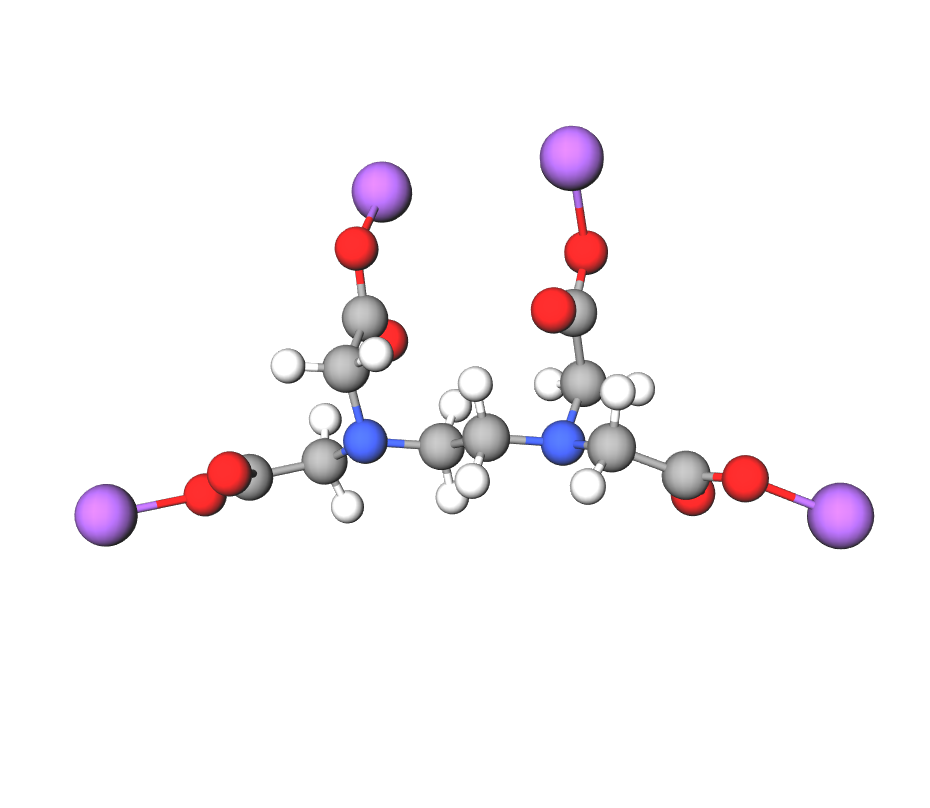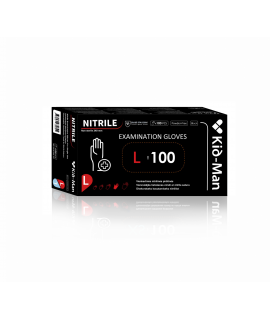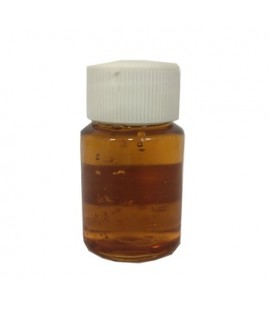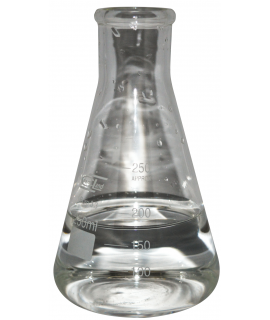TETRASODIUM EDTA (Trilon-B), 39%, L
4.80 €
03150405
Diaminoetano-tetraacto rūgšties tetranatrio druska, CAS 64-02-8, tetranatrio edatas, INCI TETRASODIUM EDTA, etilendinitrilo-tetraacto rūgšties tetranatrio druska, Versene.
Parameter | Attribute |
Tetrasodium EDTA 39% | N,N′-Ethane-1,2-diylbis[N-(carboxymethyl)glycine], Diaminoethane-tetraacetic acid tetrasodium salt, Edetic acid (conjugate base edetate) full neutralizes with sodium hydroxide, Ethylenedinitrilo-tetraacetic acid tetrasodium salt, Versene, chelate |
Formula | C10H16N2O8 |
Structure |   |
IUPAC | 2,2′,2″,2‴-(Ethane-1,2-diyldinitrilo)tetraacetic acid sodium salt |
INCI | TETRASODIUM EDTA |
CAS | 64-02-8 |
Molar mass | 292,244 g/mol |
Density | 0,860 g/cm3 (at 20 °C) |
Solubility | Miscible |
Na4EDTA is the sodium salt of aminopolycarboxylic acid, a colorless water-soluble solid. Its conjugate base is ethylenediaminetetraacetate. It is widely used for the dissolution of limestone or lime precipitates and the formation of chelating compounds.
In the food industry, EDTA is added to some foods as a preservative or stabilizer to prevent catalytic oxidation, which causes discoloration. In soft drinks containing ascorbic acid and sodium benzoate, EDTA reduces the formation of benzene (carcinogen).
In agriculture and horticulture, EDTA can be used to dissolve various metal ions at neutral or lower pH, thus facilitating the uptake of trace elements by plants. The use of EDTA in fertilizer applications reduces the amount of fertilizer used to achieve the same effect. The metal ions bound by EDTA become unaffected by other substances in the environment, such as the fertilizer. Calcium does not react with the carbonate ion resulting in insoluble calcium carbonate, iron does not react with phosphates resulting in insoluble iron phosphate.
In metalworking, Na4EDTA is mainly used to remove metal ions from aqueous solutions. It is particularly useful for mild cleaning of the metal surface and to prevent surface damage (which occurs when cleaning plaque with strong mineral acids). Sodium EDTA binds the metal ions in the form of salts (in the form of plaque), thus dissolving them, but does not dissolve the metal itself, since the pH is alkaline, i.e. slowing down the corrosive effect of the metal.
In the water treatment industry, it reduces the hardness of water and facilitates the removal of deposits in water heaters (boilers). This chelate can be found in most descaling agents. In detergents, EDTA softens water by binding metal ions and increases the effect of surfactants.
In medicine, a special salt of EDTA, known as sodium calcium edetate, is used to bind metal ions during chelation therapy, for example in the treatment of mercury and lead poisoning. Similarly, it is used to remove excess iron from the body. This therapy is used to treat the complication of repeated blood transfusions and can also be used to treat thalassaemia. Dentists and endodontists use EDTA solutions to remove inorganic debris and lubricate root canals. In addition, EDTA solutions containing a surfactant loosen calcification in root canals and allow the canals to form. It is used as a preservative (usually increasing the effect of other preservatives such as benzalkonium chloride or thiomersal) in eye preparations and eye drops. EDTA is widely used in blood analysis. It is an anticoagulant for CBC/FBE blood samples, where EDTA chelates the calcium in the blood sample, stops the clotting process and preserves the morphology of blood cells. EDTA is a fluid dispersant and has been found to be a very effective agent in reducing bacterial growth in intraocular lens implantation.
In cosmetics, EDTA salts are used as a sequestering agent in shampoos, cleansers and other personal care products to improve their stability in air, and to improve the performance of cosmetic products when used in hard water. Tetrasodium EDTA binds calcium, magnesium and other metal ions, so that cosmetic products with PAMAM foam better and require less product to achieve the desired effect. INCI feature:
- Chelating: Reacts and forms complexes with metal ions which may affect the stability and/or appearance of cosmetic products.
In laboratories EDTA is widely used to extract metal ions. In biochemistry and molecular biology, ion depletion is a commonly used method to deactivate metal-dependent enzymes, as an assay for their reactivity or to inhibit damage to DNA, proteins or polysaccharides. In analytical chemistry, EDTA is used for complexometric titration and water hardness analyses, or as a layering agent to remove metal ions that would interfere with the analysis. It is used in the cement industry to determine the free calcium oxide and magnesium content of cement and clinker. Used for the separation of lanthanide metals (lanthanides) in ion-exchange chromatography.
In the textile industry, it prevents metal ions from adjusting (changing) the colour of dyed products.
In the paper industry, EDTA inhibits the ability of metal ions, especially Mn2+, to catalyse the disproportionation of hydrogen peroxide, which is used for chlorine-free bleaching.
Important: Add the item to your basket, fill in the recipient's details and confirm your order. Thank you!
To save your precious time, we will deliver your order to your address at a time convenient for You!
*- The pictures of the goods may not correspond to the actual appearance, color, assembly or shape of the goods and their packaging. The information in the product description is of a general nature and may not correspond to the information on the packaging of the product and may not be the exact use of the product. The information given on the stocks and prices of goods may, in certain cases, differ from the actual prices and stocks of goods
Signal word: Danger |
Hazard icons:
|
Danger phrases: H302 + H332 Harmful by ingestion and inhalation H315 Irritating to skin H318 Severely damages eyes |
Precautionary statements: P261 Avoid inhalation of vapors and aerosols P280 Wear protective gloves/eye protection. P301+P312 IN CASE OF EMERGENCY: If you feel unwell, call the ACCIDENT CONTROL AND INFORMATION OFFICE / seek medical attention P304+P340 INFECTION: Remove the victim to fresh air; the victim must be in a comfortable position to allow free breathing. P305+P351+P338 IN EYES: wash gently with water for a few minutes. Remove contact lenses, if present and if easy to do so. Continue washing eyes. |
03150405
Related products
(8 other products in the same category)












